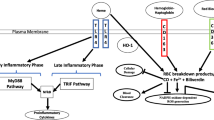
Overview
- Details the cellular events that occur following stroke
- For the first time, the dyshomeostasis and pathophysiological actions of these metals in stroke are discussed systematically in one volume.
- Many metals function as co-factors in cellular and genetic signaling and, therefore, have important roles in biochemistry ranging from essential to toxic
Part of the book series: Springer Series in Translational Stroke Research (SSTSR)
Access this book
Tax calculation will be finalised at checkout
Other ways to access
About this book
Similar content being viewed by others
Table of contents (36 chapters)
-
Front Matter
-
Zinc (Zn)
-
Front Matter
-
-
Zinc in Stroke Pathophysiology
-
Sodium (Na)
-
Front Matter
-
Reviews
From the reviews:
“This is a comprehensive book about the role of ions and anions in neurotransmission, cerebral ischemia, subarachnoid hemorrhage, trauma etc. Each chapter is devoted to the indication of mediators related to channel and mitochondrial pathophysiology. … I recommend this book to neurologists, neurosurgeons, biochemists, and neurophysiologists. Students will be greatly helped by this book, showing that cofactors can be toxic, but at micromolar ranges be beneficial to the stroked brain in small vessel disease.” (Joseph J. Grenier, Amazon.com, May, 2014)Editors and Affiliations
Bibliographic Information
Book Title: Metal Ion in Stroke
Editors: Yang V. Li, John H. Zhang
Series Title: Springer Series in Translational Stroke Research
DOI: https://doi.org/10.1007/978-1-4419-9663-3
Publisher: Springer New York, NY
eBook Packages: Biomedical and Life Sciences, Biomedical and Life Sciences (R0)
Copyright Information: Springer Science+Business Media New York 2012
Hardcover ISBN: 978-1-4419-9662-6Published: 17 May 2012
Softcover ISBN: 978-1-4939-4149-0Published: 23 August 2016
eBook ISBN: 978-1-4419-9663-3Published: 15 June 2012
Series ISSN: 2363-958X
Series E-ISSN: 2363-9598
Edition Number: 1
Number of Pages: XVII, 820
Topics: Neurosciences



